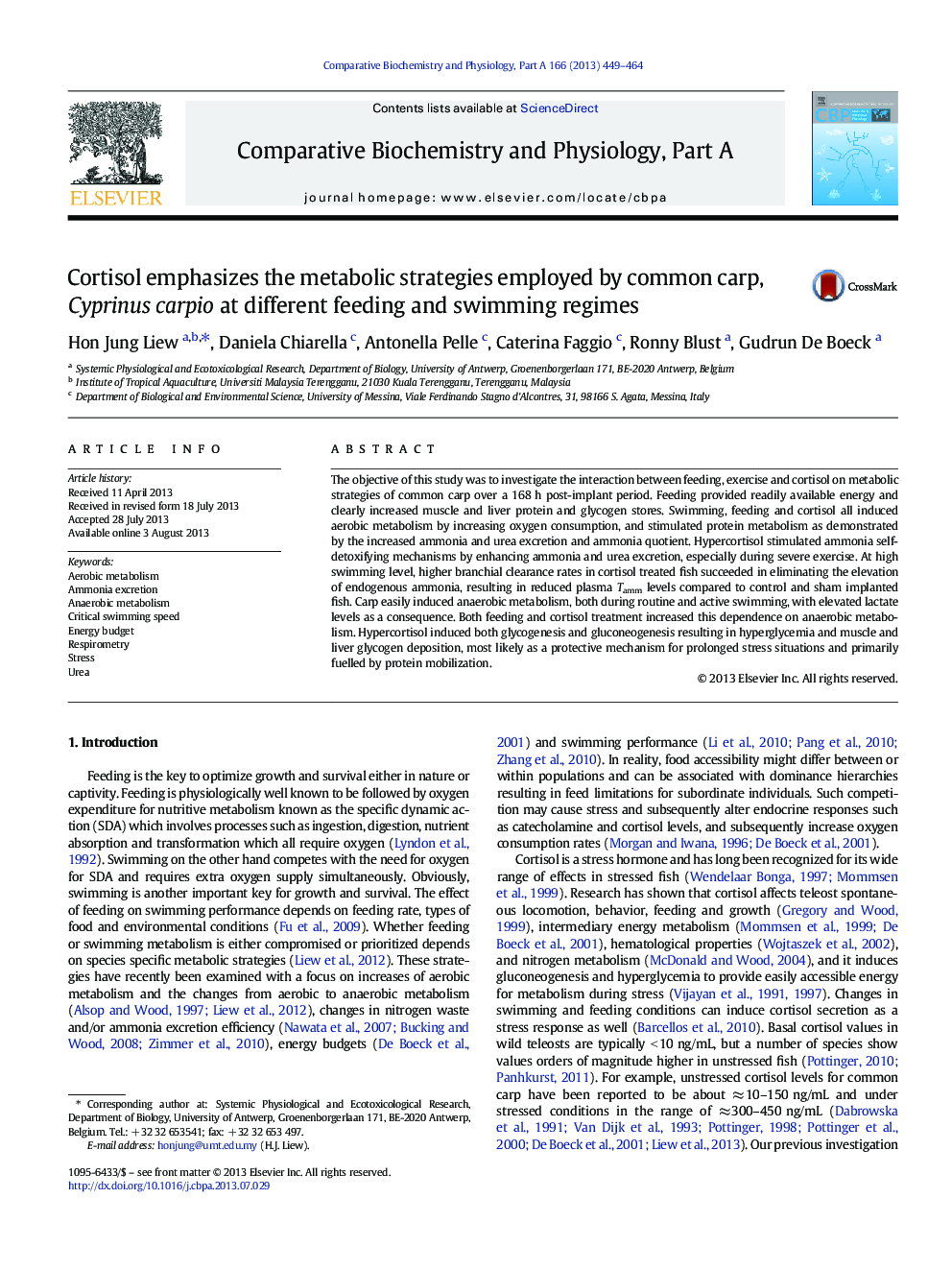| Article ID | Journal | Published Year | Pages | File Type |
|---|---|---|---|---|
| 10818836 | Comparative Biochemistry and Physiology Part A: Molecular & Integrative Physiology | 2013 | 16 Pages |
Abstract
The objective of this study was to investigate the interaction between feeding, exercise and cortisol on metabolic strategies of common carp over a 168Â h post-implant period. Feeding provided readily available energy and clearly increased muscle and liver protein and glycogen stores. Swimming, feeding and cortisol all induced aerobic metabolism by increasing oxygen consumption, and stimulated protein metabolism as demonstrated by the increased ammonia and urea excretion and ammonia quotient. Hypercortisol stimulated ammonia self-detoxifying mechanisms by enhancing ammonia and urea excretion, especially during severe exercise. At high swimming level, higher branchial clearance rates in cortisol treated fish succeeded in eliminating the elevation of endogenous ammonia, resulting in reduced plasma Tamm levels compared to control and sham implanted fish. Carp easily induced anaerobic metabolism, both during routine and active swimming, with elevated lactate levels as a consequence. Both feeding and cortisol treatment increased this dependence on anaerobic metabolism. Hypercortisol induced both glycogenesis and gluconeogenesis resulting in hyperglycemia and muscle and liver glycogen deposition, most likely as a protective mechanism for prolonged stress situations and primarily fuelled by protein mobilization.
Keywords
Related Topics
Life Sciences
Biochemistry, Genetics and Molecular Biology
Biochemistry
Authors
Hon Jung Liew, Daniela Chiarella, Antonella Pelle, Caterina Faggio, Ronny Blust, Gudrun De Boeck,
